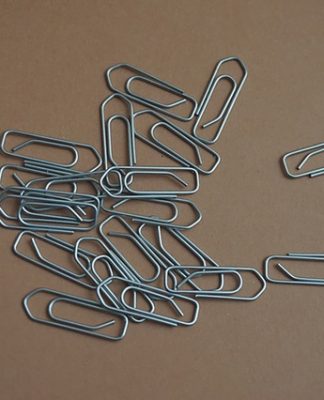But the new magic bullets are no better than the old AA one. To demonstrate this truth, I’ll deconstruct two monumental failures of modern therapy—one a leading-edge effort at splicing pharmacology and genetics; the other the most expensive psychotherapeutic clinical trial of alcoholism treatment ever conducted. Both efforts didn’t just come up short. They produced nada.
But that is only bad news for those who want to administer addiction cures to people. The good news? People have their own solutions to addiction within them. And, in remarkable ways that I’ll identify here, these two studies point us towards the methods for summoning the mindfulness on which true recovery is based. (I’ll give you my seven takeaways at the end.)
The Brain-Disease Naltrexone Study
A 2015 treatment study with alcohol-dependent subjects, published in the Journal of the American Medical Association (JAMA)—Psychiatry, caused quite a stir.
This highly touted research was conducted by a prestigious brain-disease-model-of-
The study’s authors hoped to show the benefits of “pharmacogenetic matching”—in this case involving Naltrexone treatment (NTX) for alcoholism—searching for genetic differences in patients that make the medicine effective for some, and not for others.
NTX is the textbook case for the need for such matching, since it seemingly works for some alcoholics but not for others, often leading to a washout in the final results. (Incidentally, the study included this notice: “Conflict of Interest Disclosures: Dr. O’Brien reported providing consultation to Alkermes PLC.” Alkermes produces Vivitrol: injectable Naltrexone.)
Alas, in this most thoroughgoing examination of this approach, no such matching proved therapeutically beneficial.
But do you know what was worse from the researchers’ and many observers’ standpoints? NTX performed no better than placebo in reducing subjects’ drinking with either genotype over a period of 12 weeks as the drug was actively administered!
“There was no evidence of a genotype × treatment interaction on the primary outcome of heavy drinking (i.e., relapse). . . . A significant reduction in heavy drinking occurred across all groups (that is, with both allele groups and both the NTX and placebo).”
Undeterred, this group—like US addiction medicine as a whole—still strongly backs both NTX and genetic matching. Instead of learning from their results, the investigators intoned:
“Despite the results of this trial, pharmacogenetics continues to hold promise as a way to improve the targeting of medications to improve treatment response.”
In fact, as I will show, the results should have pointed O’Brien and US psychiatry in an entirely different direction. And their failure to follow this lead will have a disastrous impact (it already has) for decades to come.
Meanwhile, supporters of NTX criticized the study for not using the Sinclair Method. Let me explain. Naltrexone is a narcotic antagonist that blocks the effects of opioids in the nervous system. This suggests that it would be an effective way to wean people from heroin and opioid painkillers. But results on the narcotics front have been sketchy and erratic. Instead, Naltrexone has been more effective in curtailing drinking.
Apparently there is enough carry-over from narcotics’ effects to alcohol’s more diffuse action (there aren’t alcohol receptor sites) to make Naltrexone effective with the latter—more so than with narcotics!
Enter David Sinclair, an American psychologist who worked in Finland. The Sinclair Method is a paired association learning technique in which subjects take Naltrexone, then drink alcohol. Since Naltrexone blocks alcohol’s effects, people unlearn the associations they had with drinking that had lead them to drink excessively. (This process is called “extinction.”)
However, the Sinclair Method has largely devolved to patients being given Naltrexone for 12 weeks, then carrying the drug with them to use when they crave alcohol (“targeted medication”). Claims are commonly made that the Sinclair Method is 80 percent effective (for example, on the science podcast, Radiolab).
In fact, in this study authored by Sinclair (which was sent to me to prove the efficacy of the Sinclair Method by a major Sinclair booster), 12 weeks of Naltrexone and 20 weeks of targeted Naltrexone were used with either supportive therapy, or with cognitive coping skills therapy.
With supportive therapy, “Naltrexone was not better than placebo in the supportive groups.”
Only in the coping group did Naltrexone do better than placebo, but still produced only a very small effect: “27% of the coping/naltrexone patients had no relapses to heavy drinking throughout the 32 weeks.”
So benefits assignable to the independent effect of NTX using the Sinclair Method, averaged across the two types of psychotherapy adjuncts, were minimal. This trial’s findings, muddy overall, are so unimpressive as to be discouraging of both the NTX and the psychotherapy involved.

Source: Journal of Clinical Psychopharmacology, Vol. 21, No. 3
The O’Brien et al. results, on the other hand, point in a totally different and more promising direction. Their study was more a “placebo trial” than an “NTX trial.” The message to be deduced from it in fact comports with the results of the largest controlled trial of psychotherapy for alcoholism ever conducted: Project MATCH.
Project MATCH
MATCH was organized by the National Institute on Alcohol Abuse and Alcoholism (NIAAA). It involved 1,726 largely alcohol-dependent subjects. Including follow-up analyses, MATCH ran from 1989 to 1997. The aim was to test the then-popular idea that major types of alcohol treatment—coping skills, motivational enhancement, and 12-step facilitation—would each optimally benefit people with distinct psychological profiles.
Note that no placebo (that is, a no-treatment, or control group) was used in MATCH. However, hundreds of patient-treatment matches were tested in MATCH. And, guess what?
No such matches proved useful.
Instead, faced with the staggering costs of the study (originally pegged at $27 million, but perhaps ultimately totaling nearer to $50 million), the NIAAA trumpeted the overall success for treatment across the board. According to director Enoch Gordis:
“The good news is that treatment works. All three treatments evaluated in Project MATCH produced excellent overall outcomes.”
We shall see, however, that this statement entailed a harm reduction perspective—not very popular (believe me) at the time the study was conducted.
Since the motivational enhancement treatment in MATCH entailed four sessions (compared with 12 for the other two therapies), and since subjects attended on average only three-quarters of their sessions (lowering this to three vs. nine actual sessions), the results indicated that brief treatment produced good results.
In 1997 I summarized the MATCH results, combined with the NIAAA’s NLAES project, a national survey of people’s drug and alcohol problems over their lifetimes:
“(1) minimal or no treatment produces outcomes that are equal to/better than those from longer/standard treatments; (2) patient traits and initiative are far more important than treatment type or intensity for recovery; (3) reduced drinking is the most common outcome for alcohol-dependent individuals.”
Years later, in 2005, Cutler and Fishbain re-analyzed the MATCH data, with the conclusions:
“Overall, a median of only 3% of the drinking outcome at follow-up could be attributed to treatment. However this effect appeared to be present at week one before most of the treatment had been delivered.”
Let us now turn to O’Brien et al.’s results as depicted in the study’s graphs (below).
Note that: (1) NTX yields sharp drops in days drinking, amount consumed when drinking, and craving. (2) Placebo-based drop-offs on all of these measures are as great as they were for NTX. (3) Genome differences in the measures are trivial to nonexistent. (4) Reduced consumption in all cases was instantaneous, and most of the decline in craving also occurred in the first week of the 12-week study.



Source: *
Conclusions: Placebo, Mindfulness and Addiction
We learn from O’Brien et al., in conjunction with Project MATCH, that we need to radically revise our notions of treatment and its outcomes:
1. Naltrexone therapy was effective in the O’Brien study.
O’Brien et al. measured the NTX results to be as good as they have ever been found to be, by the Sinclair Method or by pharmacological researchers. What disconcerts us was that the placebo was found to be equally effective in every respect. (In fact, after week five, subjects in one of the placebo groups expressed the least craving.)
The difference between O’Brien et al . and Sinclair is not in how well NTX performed; the difference is in how well the placebo did.
[A brief methodological note: The O’Brien et al. experiment was carried out under double-blind procedures. This means that neither the therapists nor the subjects knew whether patients were receiving the placebo or NTX. In the experimental world of drug therapies—in which I have worked as a consultant—people are skeptical about double-blind claims. Observers feel that the real drug is obviously different—in appearance, administration, or felt effects—to the placebo, and that the research staff, certainly, become aware of the ruse (called “penetrating the blind”). But O’Brien et al., obviously, used an impeccable double-blind protocol.]
2. Therapeutic inputs per se operate briefly, instantly, to the point that seemingly no therapy is required for people, given other life factors, to reduce their drinking.
Unlike medical treatments for, say, cancer, addiction therapies don’t exert their effects over the long run. It seems that simply organizing and focusing people for the purpose of cutting back their drinking, then checking up on them, is sufficient. Note that, in the O’Brien et al. charts, as in Project MATCH, drops in drinking occurred instantly, at (or before!) the first session.
The O’Brien group reported that it used MM therapy, or Medical Management, described in the article as a “minimal form of clinical intervention supporting the use of effective pharmacotherapy and reduction in alcohol consumption.”
This minimalist therapy—combined with a pill that did nothing—caused people to cut back their drink remarkably, instantly, colossally, from alcoholic to normal levels, with few instances of relapse.
3. Subject traits (other than motivation and social stability) make little difference in responses to alcohol treatments.
The whole point of Project MATCH was to, well, match subjects with certain traits to treatment consistent with their profiles.
None of that mattered in MATCH.
It should be noted, however, that the subjects in MATCH and O’Brien et al. were selected for good prognoses—the absence of mental disorders or criminal problems, no simultaneous addictions to other drugs, and for being socially stable. Given these positive indicators, it didn’t matter which treatment they received or how minimal (or nonexistent) the treatment was—as a group they reduced their drinking below alcoholic levels.
O’Brien et al. tested the hypothesis that variants of the opioid receptor gene would make Naltrexone more or less effective in blocking alcohol’s effects. That did not occur. Instead:
“A significant reduction in heavy drinking occurred across all groups (that is, with both allele groups and both the NTX and placebo). Other drinking outcomes, and all secondary outcomes, demonstrated similar time effects, with no genotype × treatment interaction.”
This startling, biologically-tested result indicates that the source of NTX’s outcomes is not the opioid receptor site.
4. Neither O’Brien nor MATCH found abstinent recovery to be usual—instead, harm reduction was the rule.
If abstinence is the desired outcome, MATCH and O’Brien et al. found it uncommon, using the best therapies available. Of course, Naltrexone—as does faux Naltrexone—reduces the desire to drink. So it is essentially a harm reduction technique.
This wasn’t the aim with MATCH, where abstinence was the goal sought for the entire population. Yet, the Project MATCH team was forced to hype its good outcomes couched in harm reduction terms:
“During the year after treatment, 1 in 4 clients remained continuously abstinent on average [compare this with the fabricated claims from private treatment centers of 80% abstinence rates, as depicted in the film, The Business of Recovery]… . The remaining clients, as a group, showed substantial improvement, abstaining on 3 days out of 4 and reducing their overall alcohol consumption by 87%, on average. Alcohol-related problems also decreased by 60%.”
5. The fact that minimalist/placebo treatments quell alcoholism tells us that being convinced that you can reduce (or eliminate) your drinking or drug use, and being motivated to do so, are the essential elements in recovery.
What an important discovery! What’s more, owning the means for reducing substance reliance means that people are more assured of not relapsing, since they are the power behind eliminating the addiction—not God, medications, or a recovery group.
6. The O’Brien et al. results support a holistic approach based on self-empowerment and mindfulness—a heightened awareness of oneself and one’s environment.
How can we incorporate the MATCH/O’Brien et al. results into treatment? Most fundamentally, we might help people avoid legal trouble and mental disorders, lead a stable life, and want to change—traits for which subjects in both studies were selected.
That is, interventions must address a person’s entire life, assisting them to develop the reasons and means to recover.
Quite simply, this truth contradicts the disease model as it is reflected in the very idea that a drug can cure addiction.
7. The study not done: How did beliefs affect the O’Brien et al. subjects?
What is most remarkable is the utter lack of curiosity O’Brien and his psychiatric colleagues display towards their placebo findings. Looked upon as a pharmacological trial, their results would cause the FDA to reject NTX as an alcoholism treatment. Yet subjects in fact reduced their drinking dramatically!
Questions not answered:
- Did subjects who “penetrated” the blind behave differently than those who did not?
- How did placebo subjects react when they were informed they received fake pills?
- Did they—like Dumbo initially, when he learned his ability to fly wasn’t due to the feather he held in his trunk—plummet to earth?
- Or, like Dumbo eventually did, did they come to realize, and rely on, their own efficacy?
Ilse Thompson and I have created a program in Recover! An Empowering Program to Help You Stop Thinking Like an Addict and Reclaim Your Life based on exposing people to their own efficacy, along with teaching them mindfulness exercises for combatting addiction. In Buddhism, the technique of mindfulness involves observing internal and external stimuli without reacting emotionally. This “skill” makes self-control a part of people’s mental apparatus. Meanwhile, mindfulness meditation marshals the mind’s resources for combatting craving,significantly reducing relapse.
And the O’Brien et al. and Project MATCH results, quite contrary to the researchers’ intentions, neatly demonstrate how and why such an approach works.
*Heinälä, P., Alho, H., Kiianmaa, K., Lönnqvist, J., Kuoppasalmi, K., & Sinclair, J. D. (2001). Targeted use of naltrexone without prior detoxification in the treatment of alcohol dependence: a factorial double-blind, placebo-controlled trial. Journal of Clinical Psychopharmacology, 21(3), 287-292.


 Stanton Peele is a columnist for
Stanton Peele is a columnist for 




















